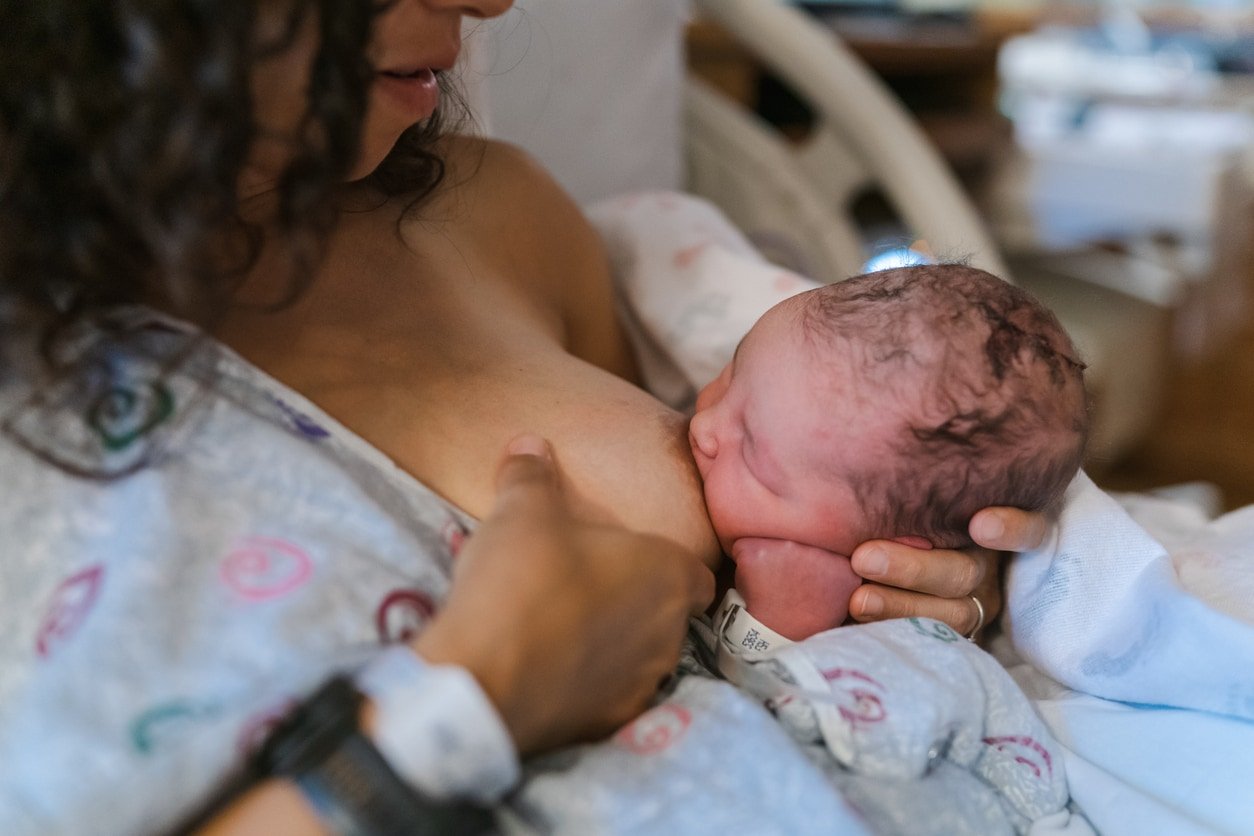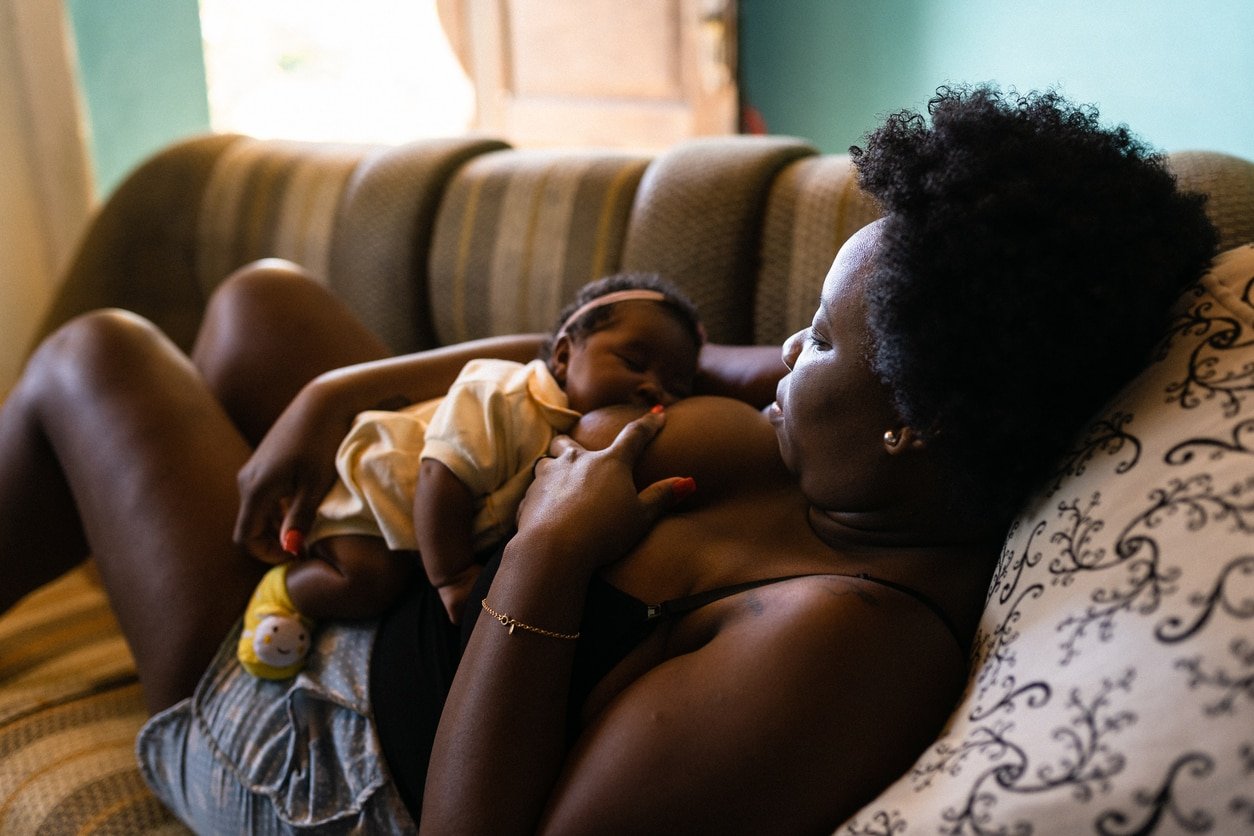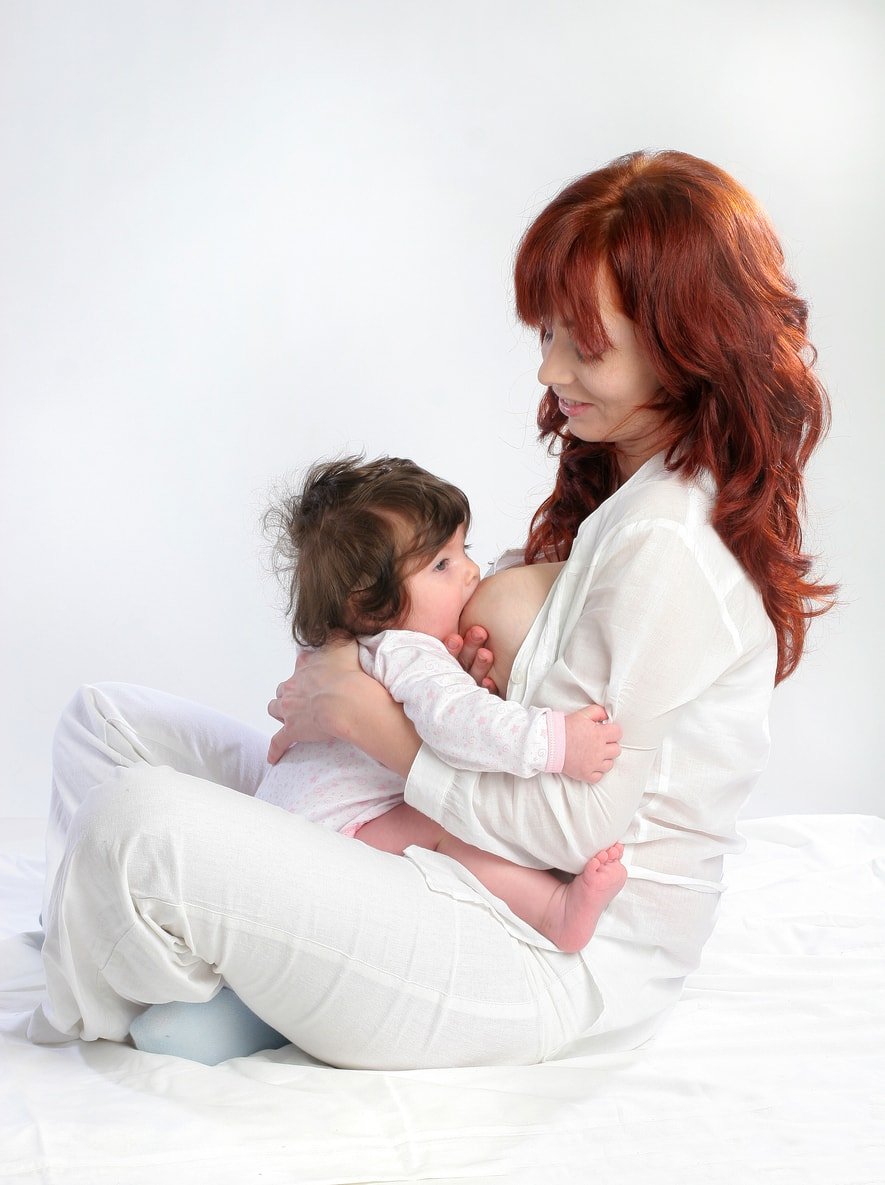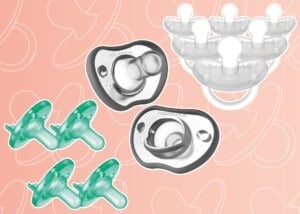Finding a breastfeeding position that works best for you and your baby can make all the difference as you start your breastfeeding journey. Every baby and mom duo is different, so what works best for one pair will most likely be different for another. For many, finding an effective and comfortable feeding position will take some trial and error. Some mothers stick with the same breastfeeding position over and over, while others change positions with each feed or as their baby grows. There are seven basic breastfeeding positions to consider, including the football hold, side-lying, laid-back, cross-cradle, koala hold, and more. Let’s dive in and discuss all the ins and outs of finding a breastfeeding position that works best for you and your baby!
The Basic Steps for Positioning
A few steps are important to note when working on finding an effective and comfortable breastfeeding position for you and your baby. Let’s break it down step by step:
1. Pick a Comfy Spot
Find a comfortable and supportive feeding spot. This could be a rocking chair in your nursery, an end spot on your couch, your bed, or anywhere else that gives good back support and that you feel most comfortable in.1
2. Choose a Feeding Position
Pick the breastfeeding position that works best for you. Again, it might take some time to figure out what is most comfortable and allows you and your baby to breastfeed most successfully. Different feeding positions offer different advantages and support depending on what you and your baby need.1,3
3. Keep Your Baby Close
Bring baby up to your breast and close to you when feeding. No matter your position, your baby should be close to you. This may mean using a breastfeeding pillow or rolled-up blanket to get your baby high and close to your breast. If baby is too far from you, latching will be difficult, and you could end up with sore nipples. No one wants that!1
4. Ensure You Have a Good Latch
Even with good positioning, you still need a proper latch for baby to transfer milk from your breast effectively. It can take some practice for them to learn how to latch well. It’s always a good idea to contact a lactation consultant for support with latching.1,3
7 Breastfeeding Positions You Can Try
You want to find a breastfeeding position where you and your baby are most comfortable. From the side-lying and football hold to the cross-cradle and koala hold, here are seven basic breastfeeding positions that moms can use:
1. Cross-Cradle

The cross-cradle breastfeeding hold is a good feeding position to start with and is commonly used with newborn babies. It allows the mom to control baby’s head and support her breast simultaneously. This increased control over the baby and breast can be extremely helpful when your baby is learning how to latch. Some may find it helpful to use a breastfeeding pillow when using the cross-cradle hold position. This can help you bring baby closer to your breast.1,2,3
In the cross-cradle breastfeeding hold, the baby’s body is lying across the mom’s abdomen, with mom’s hand (the hand opposite of the current feeding breast) supporting the back of the baby’s neck and arm supporting the baby’s body. Mom can use her free hand on the breastfeeding side to hold and support her breast.
2. Cradle

The cradle breastfeeding position is a very common position that breastfeeding moms use. Some may even call it the “classic” breastfeeding position.3
A cradle position consists of the baby lying across the mom’s abdomen with her feeding side arm supporting the baby underneath their back and her hand toward the baby’s bottom. This position is effective, but new mothers may find they don’t have as much control over their baby as they do in other breastfeeding positions. However, the cradle position may work well as baby grows.1,3
3. Football

The football hold, also known as the clutch hold, is very helpful during breastfeeding due to the amount of control it offers. Infants born prematurely or those who struggle with head control may benefit from this position. The football hold breastfeeding position is also a good option for mothers who had a caesarian section, as it lets them avoid putting baby on the incision, allowing mom to heal.1,3
The football hold breastfeeding technique requires the mom to place her baby at her side, bottom facing back. Mom’s feeding side arm is under baby, supporting the back and neck. Mom’s free hand is then available to support her breast while baby is feeding.1,3
4. Side-Lying

Giving birth is no easy task and can leave your body feeling exhausted and sore. The side-lying breastfeeding position offers a way for mom to lay while feeding. Sitting may bring discomfort to a new mom who recently gave birth, making the side-lying breastfeeding position ideal for mom and baby initially.1,3
The side-lying breastfeeding position is just as it sounds — mom and baby are both lying on their sides, facing each other.1,3 Some moms may find that using a pillow or rolled blanket behind baby’s back can help keep them from rolling.1
5. Laid-Back Breastfeeding

In the laid-back breastfeeding position, the baby will be chest to chest with mom as she is lying back reclined. The laid-back feeding position is useful for mothers with a strong letdown. If a mother has a strong letdown, it can be difficult for the baby to latch and breastfeed due to the amount and rate at which they receive their mother’s breast milk as they first start to feed. Laying back allows gravity to help slow down the speed at which baby receives milk.4
If a mother and baby are doing skin-to-skin contact after birth, the laid-back breastfeeding position could be a good first feeding position to try. Skin-to-skin after birth has been shown to promote breastfeeding. When baby is on mom’s chest soon after birth, they may even crawl up to reach mom’s breast to feed.3
6. Koala Hold

The koala-hold breastfeeding position, or the seated straddle position, is a more “upright” feeding position.3,4 When using the koala hold for infants, lots of support is needed.
In this position, the baby will straddle mom’s leg, facing her. Mom will use her arm to support the baby’s back and neck/head area while feeding. The koala hold may be beneficial for babies who suffer from reflux, swallowing disorders, and breathing disorders. It’s also a helpful position if the mom has a strong letdown due to the upright position that baby is in when they are feeding.4
7. Carrier

The concept of “babywearing” has been around for ages. It has numerous developmental benefits for baby and may even increase the duration of breastfeeding for a mother and baby duo. When wearing baby in a carrier, mom can more easily go about her day while having her hands available and the baby comfortable right on her.7
When mom and baby have successfully learned to breastfeed and are comfortable with babywearing in a carrier, they may even venture into breastfeeding while in the carrier.7 There are many different baby carriers on the market to choose from. If one doesn’t feel quite right, don’t give up. Another may be more comfortable and just right for you and your baby!
Breastfeeding Positions Video
Here’s a great video to show you examples of these (and more) breastfeeding positions:
How To Get a Good Breastfeeding Latch
A good latch is imperative for successful breastfeeding. It allows baby to transfer milk effectively and will help mom steer free of sore nipples.4 Here are some tips to remember when latching your baby:
- Bring your baby to you, not your breast to your baby.5
- While supporting your breast, use your nipple to touch your baby’s lips to get them to open their mouth wide for latching. When your baby’s mouth is wide, guide them onto your breast, helping them get a deep latch. The nipple should be moving toward your baby’s palate.4,5
- Keep your baby close to your breast and well-supported. Using a breastfeeding pillow or rolled blankets may help.
After latching, observe your baby. When observing a good latch, you should see:3,4
- Wide flanged lips around the breast
- Baby in close with their chin touching the breast and their nose slightly away from the breast for easy breathing
- Baby actively sucking and swallowing breast milk
Breast Support Techniques
Lactation consultants are an excellent resource for all things breastfeeding. While you’re in the hospital, asking for assistance from a lactation consultant can be very beneficial if they are available on-site. They can show you supportive techniques and help you find the most comfortable position for you and your baby to breastfeed in. If you cannot see a lactation consultant while you’re in the hospital and need extra assistance, consult with your and your baby’s healthcare team. They may be able to offer support and education or refer you to a local lactation consultant.
When starting your breastfeeding journey with your newborn, you may find the most success with feeding positions that offer more control while you and your baby learn to feed together. An excellent place to start when breastfeeding may be trying out the cross-cradle hold and football hold. These positions allow mom to have an extra hand to support her breast. Here are some other techniques you can use:
The “C” or “U” Hold

Using the “C” hold or “U” hold on the breast can provide extra support and control over mom’s breast. The “C” hold is when mom’s hand “cups” around her breast in the form of a “C.” Her thumb and fingers should be back, behind her areola, with the thumb above the areola and fingers below.3 This hold can be helpful when latching, allowing the baby to get a deep and successful latch.5
The “U” hold is similar, but the hand forms a “U” shape around the breast with the mom’s thumb on the outside and fingers on the inside of the breast, creating the “U.” This will also allow mom to have control and support her breast while feeding.1
The Flipple Technique
Another breastfeeding support technique is the “flipple.” The flipple technique can help you obtain a deeper latched position. Starting with the “C” hold, mom will use her thumb to push back on her breast, lifting her nipple upward and away from her baby. Mom brings baby to her breast, and as baby is about to latch with a wide mouth, mom will release her nipple. This simple flipple technique will help the baby get a deep latch on their mother’s breast.6
Breastfeeding Positions To Avoid
As stated, breastfeeding positions are not “one position fits all.” With that said, as a mom, you will feel what works best for you and your baby. You want to avoid positions that are uncomfortable, cause pain, and do not let your baby latch effectively. Always ensure your baby is well-supported and bring them to your breast. Avoid hunching over to bring your breast to your baby. This will lead to a difficult time latching as well as a sore back for you.5
You never know what breastfeeding position might work best for you and your baby, whether it’s the football, side-lying, cross-cradle, koala hold, or something else. If one doesn’t feel quite right, move on to the next! Make sure to ask for help or reach out to a lactation consultant while you are in the hospital for extra support.











